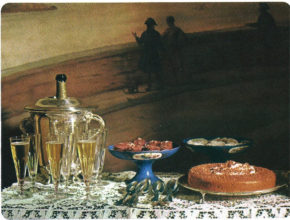Before you say, “Oh, no! Not another bit of useless linen.” Let me back up a moment and add a little nuance. Even though it may seem as if there was a ton of useless linen ephemera in the old days, each bit of linen was born out of a useful purpose. In days where people used silver, glass and crystal much more frequently, cloth not only reduced noise, but also lessened the chances of scratching your expensive items. In a world where people often bought items of furniture once, kept them for a lifetime and then handed them down to family members for generations, cloths protected these investments from harm. So, many of these items have been lost because we live in a throw away culture that never thinks about protecting a household item for a generation. If you scratch your Ikea table, it’s kicked to the curb or sent to the Goodwill. At a time that many of us are looking to reduce waste and step away from fast manufactured goods, we might find ways to make things last by looking to the past. So here goes:
Tray Cloths or Liners – these, as you would expect from the name, fit onto trays when serving tea, coffee or breakfast.
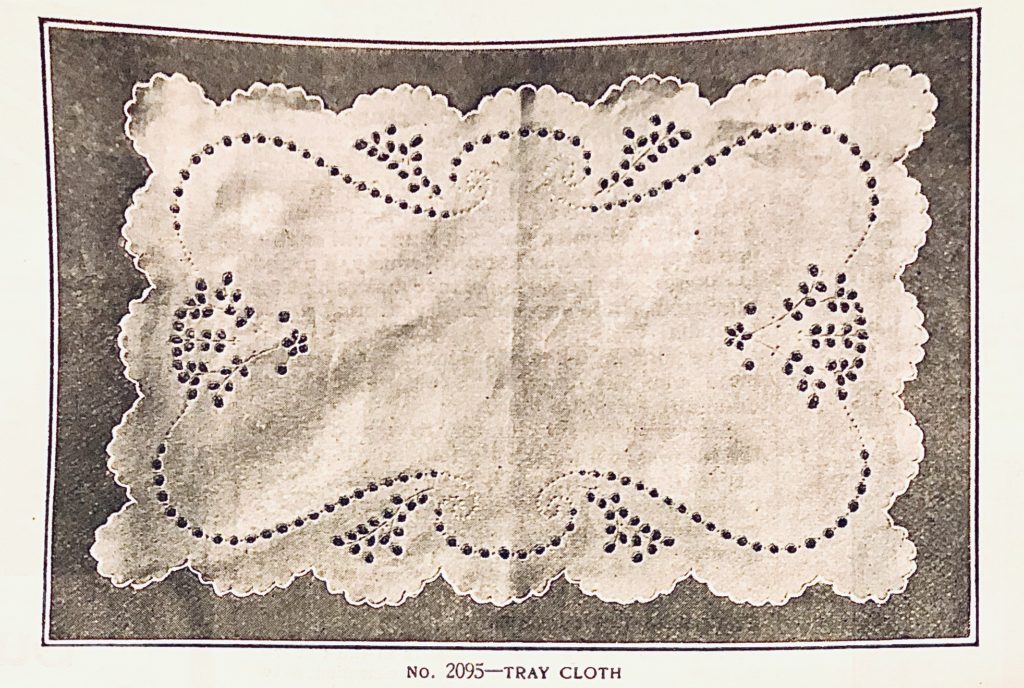
Generally speaking, breakfast trays were rectangular, (either on legs for in-bed service or flat for serving from a table) and fairly large as breakfast in bed could consist of a small pot of coffee or tea, creamer, sugar, a cereal or grapefruit bowl, small toast rack, egg cup and underplate, napkin, silverware, cup, saucer and small vase with a flower. The liner made for an attractive presentation, it protected the tray, the china, and kept noises to a minimum. Breakfast tray liners could be white, have small colored embroidery or sometimes be really colorful.
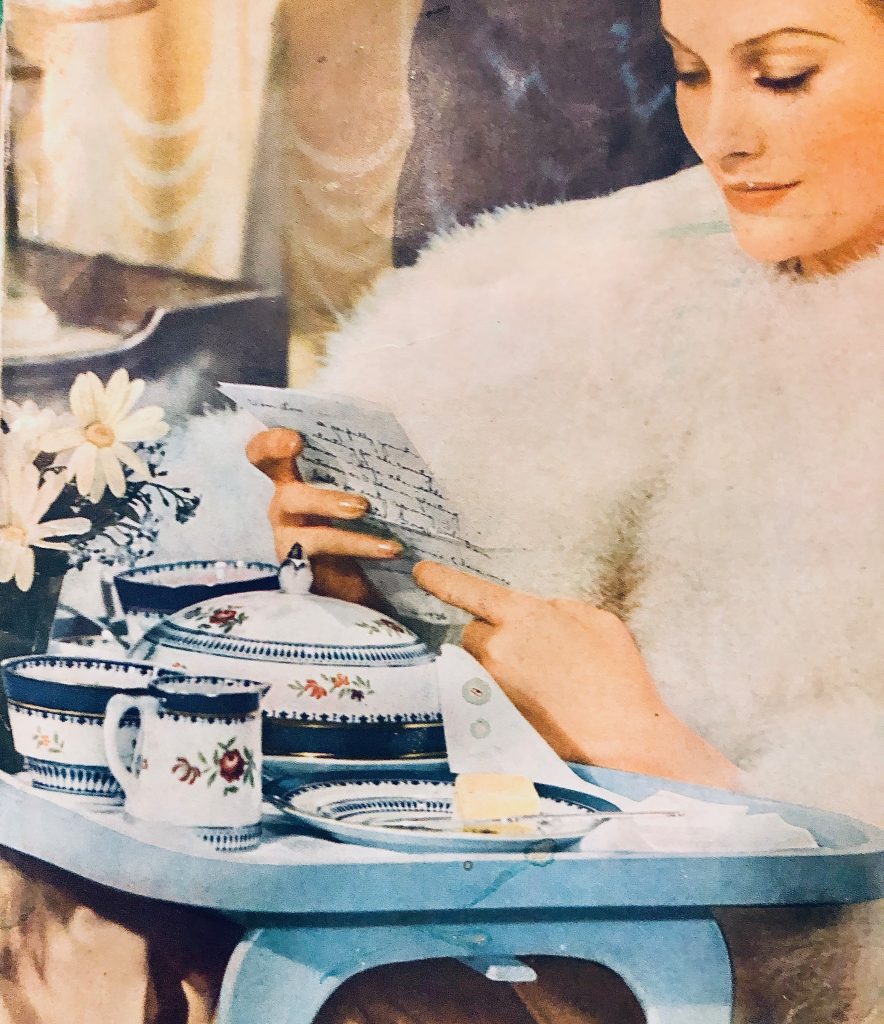

Tray liners can sometimes be referred to as doilies, though when rectangular they should not be called this. Only oval or round tray liners are ever referred to as doilies but when they get to a great size they usually are solely referred to as tray liners or tray cloths. Doilies usually have lace work, while round tray cloths are usually entirely made of fabric with embroidery or cut work.
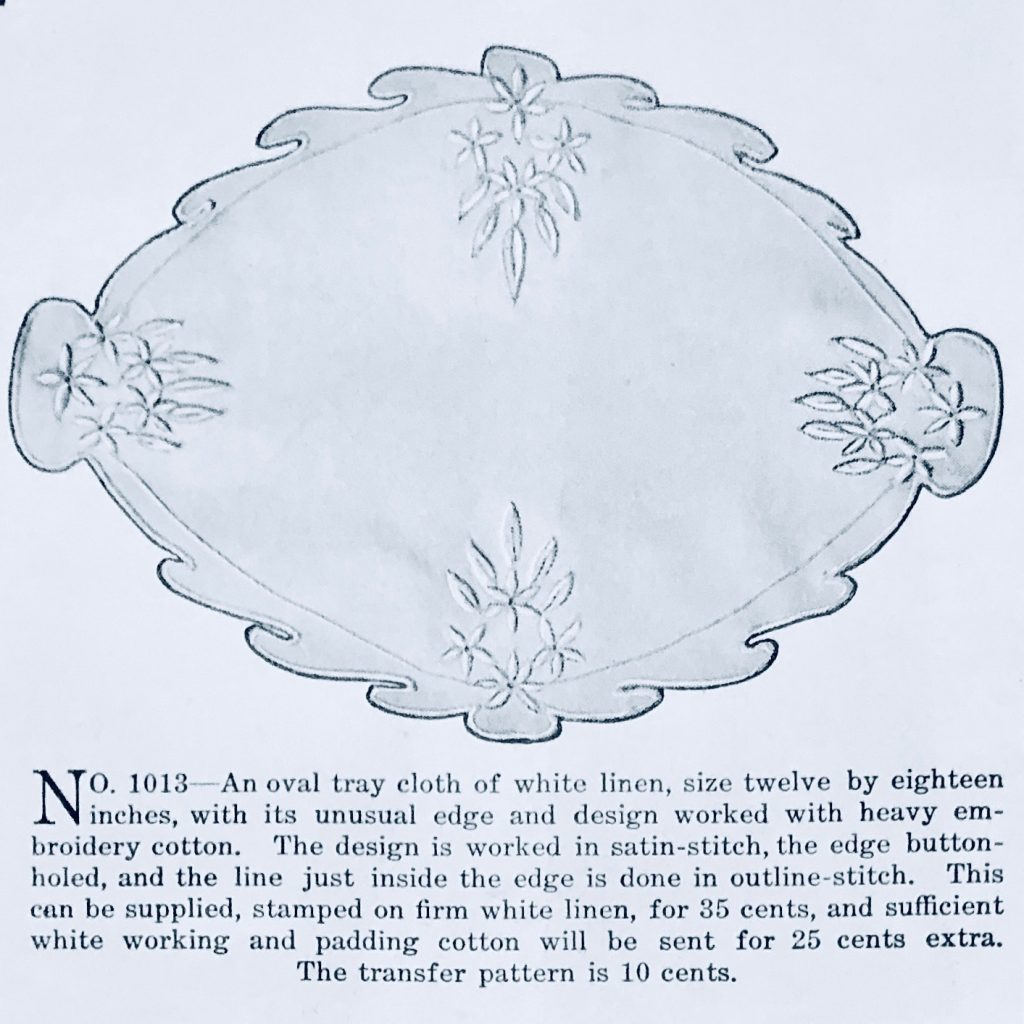
Cloths for invalid trays were also normally rectangular and were typically plain white so as not to “disturb” the sick as they recovered in bed.
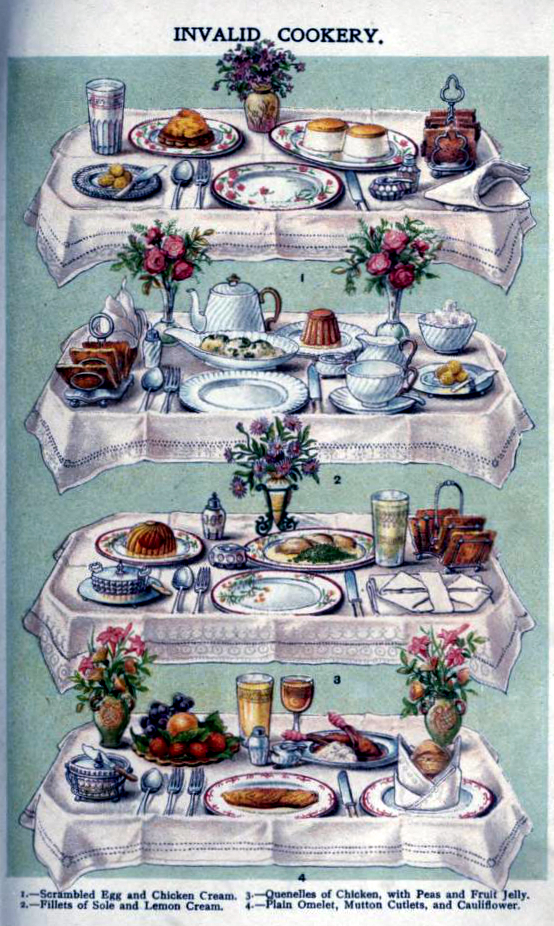
Tea trays could be a rectangular tray or oval, with their own fitted oval liners. Again, these were fairly large to fit a tea pot, water pot, slop bowl, milk pitcher, sugar, cups, saucers, tea napkins, spoons, lemon dish and strainer. The cloth was to provide a clean and bright background to your silver or china. Liners and doilies like this were white or cream and decorated with cut work or tasteful lace. On rare occasions I’ve even seen pale blue liners. Racy!
This is not to say that there were not colored cloths, there were. These were just not common and were often frowned upon in etiquette books, but as we’ve talked about, people don’t actually live by etiquette books.
Some etiquette books will tell you to place a cloth under a tea service, especially when on a wooden tray, but others will admonish you to not:
“The tea tray is always set up without a cloth and with all the things on it arranged in pleasing symmetry.”
Amy Vanderbilt’s New Complete Book of Etiquette, 1963
More colorful embroidery appears at the turn of the century and can be seen in many Arts and Crafts home linens. We also begin to see liners with painted or printed designs on them. Art Deco linens tended to be very simple geometric white embroideries, but you can find some very wild and colorful patterned cloths in the 20’s.
By the 30’s/40’s embroidery can be seen that’s not only colorful but a little kooky. Breakfast trays begin to have embroideries of chickens and pigs. Cutwork exalts you to have a “Good Morning!” Cocktail tray doilies have martini glasses and cute sayings. As we move into the 50’s, the range of colors, prints, etc. continue to grow. I especially love the embroidered cocktail tray liners of George Briard – they’re kitschy without being tacky.
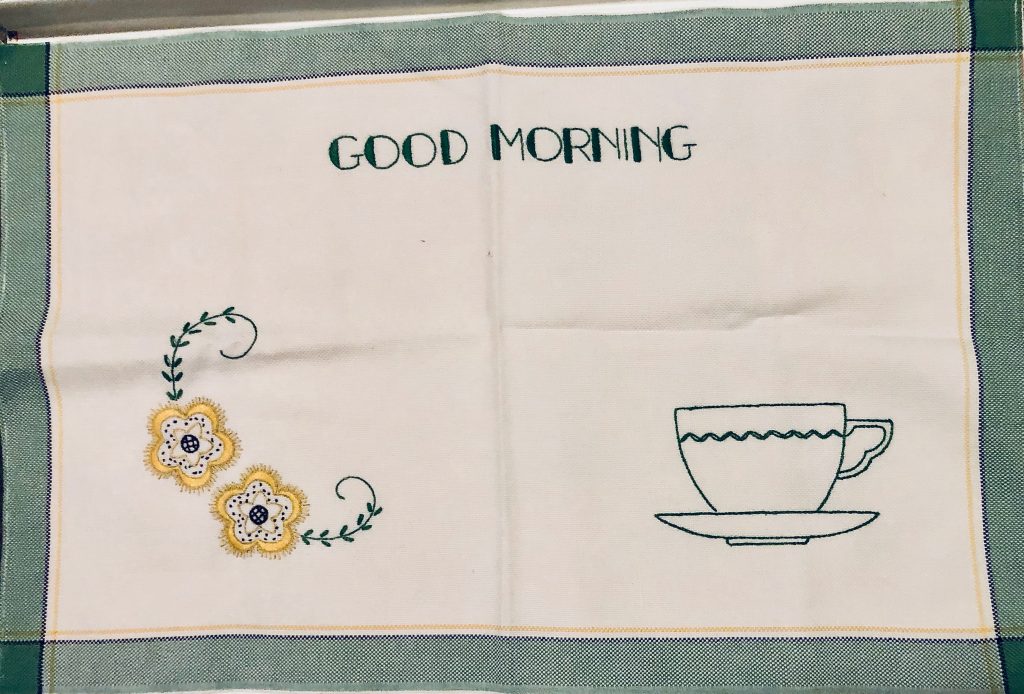
Snobs will continue to say that liners should be white or cream with minimal tasteful white or possibly pale pastel embroidery. I do agree that with the tea service, porcelain tea sets are colorful enough and they should not compete with the linen. Of course, all bets are off if you are especially stylish and make it look fabulously your own!
In the end, if you’re in the market to collect these little beauties, just know that a tray liner will have an edge around all four sides. It will rarely have lace work; there are of course, exceptions to this but they really are rare. A tray cloth will never be a thick crochet, (tray cloths will have flat surfaces so that china and silver don’t fall over). If you see something similar with a thick fabric, knives and forks or meat embroidered on them, they are not tray cloths. Those are carving cloths, which I’ll cover later.


